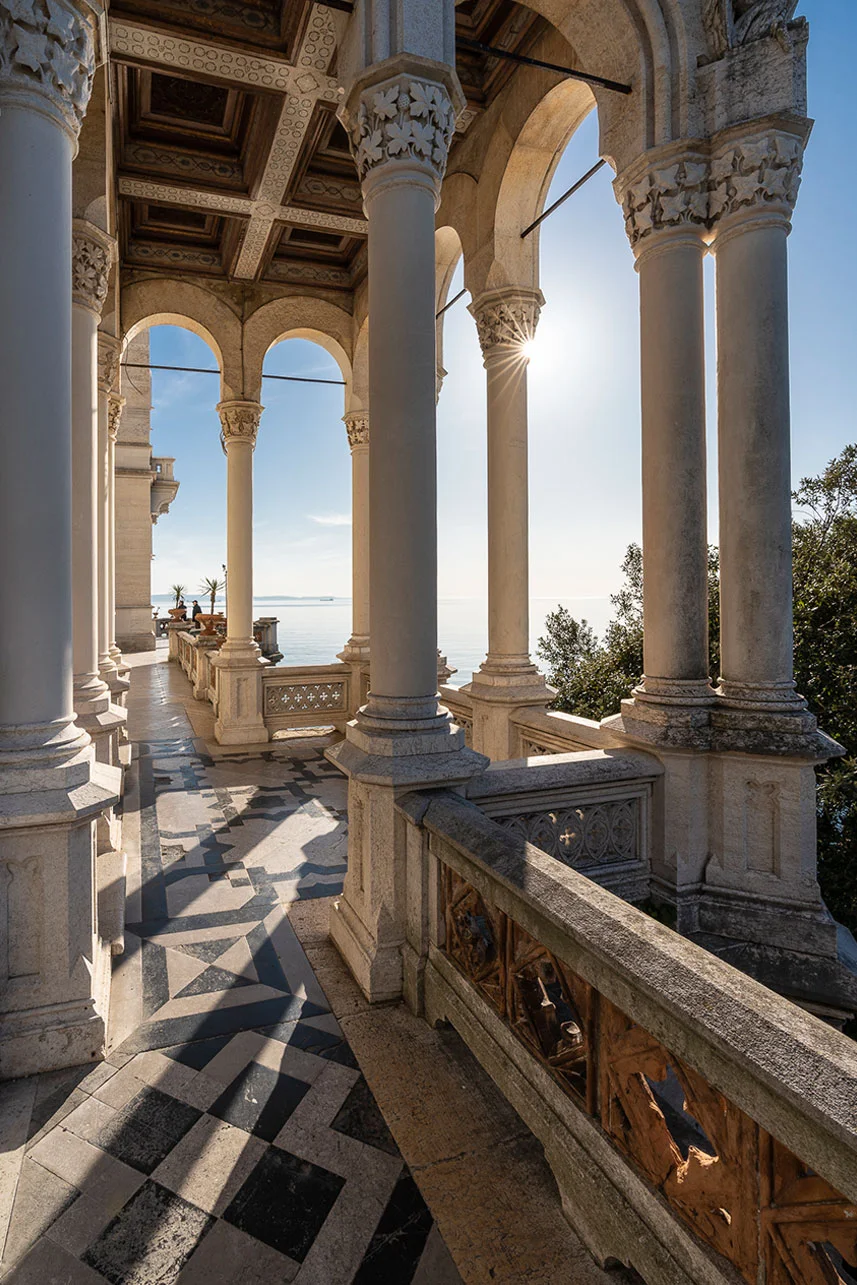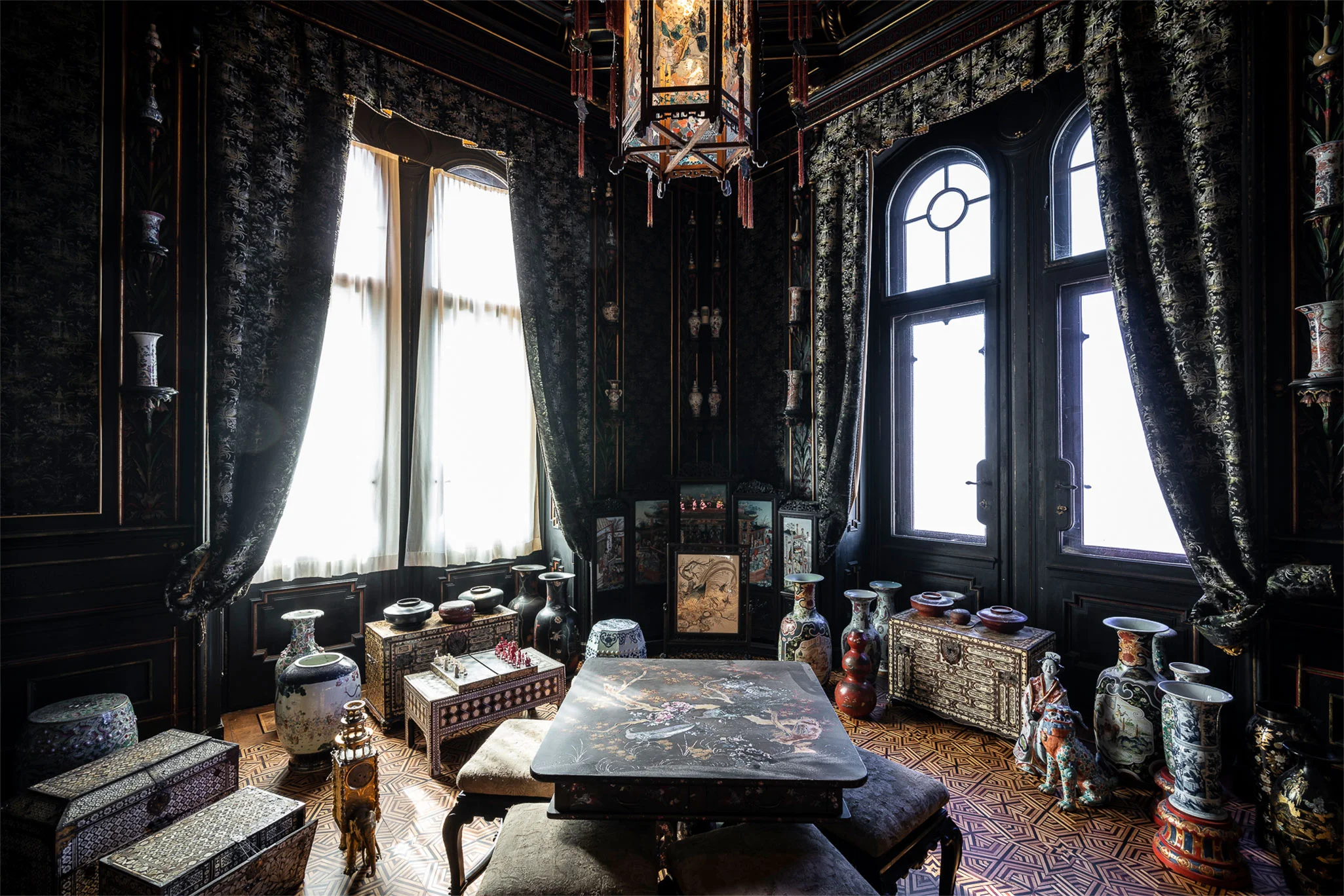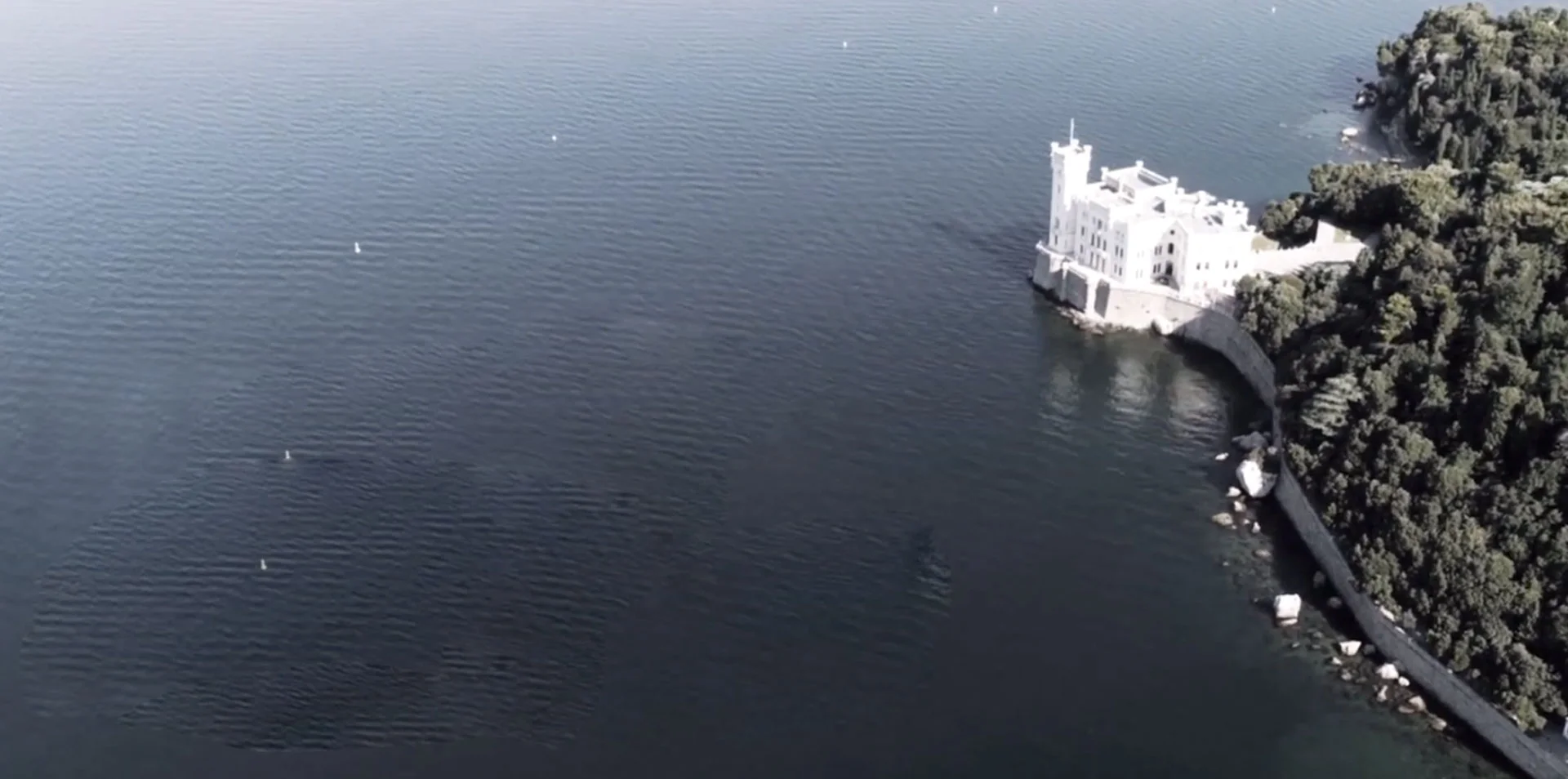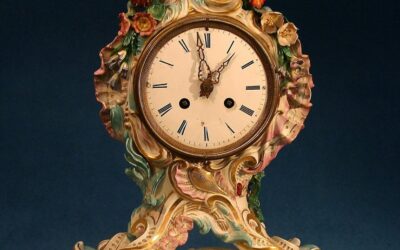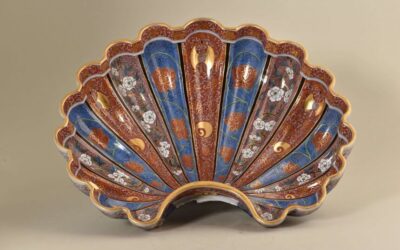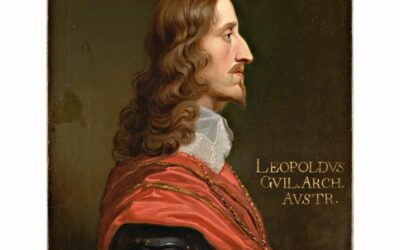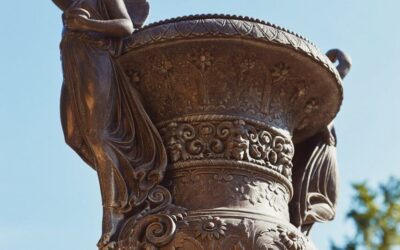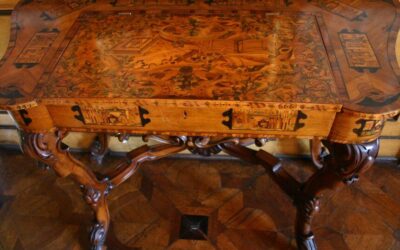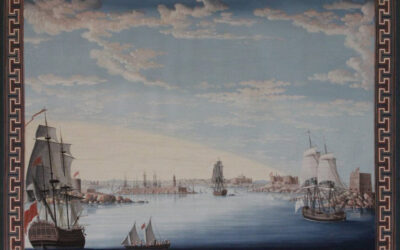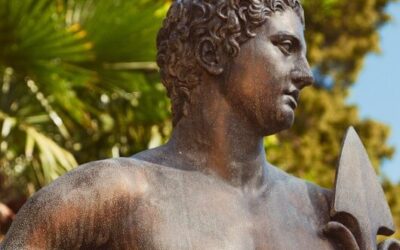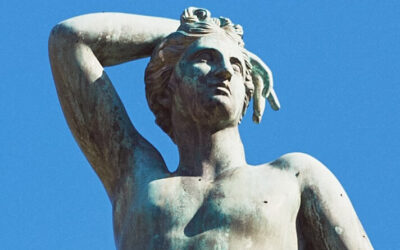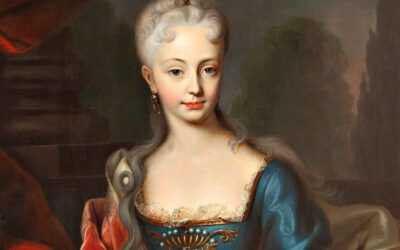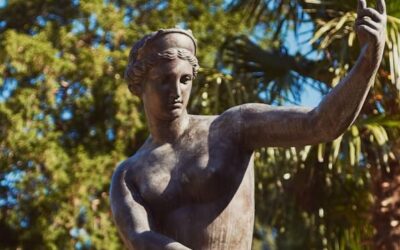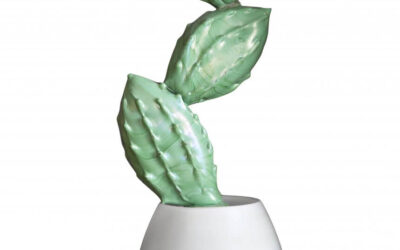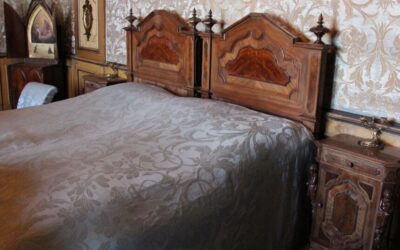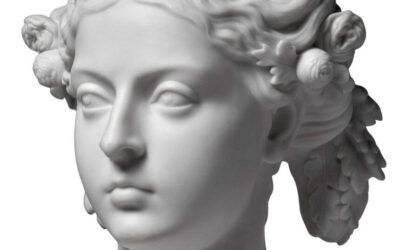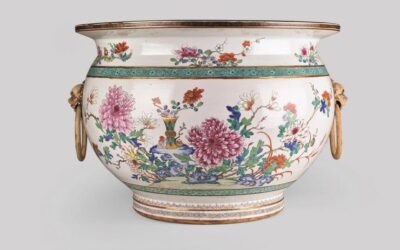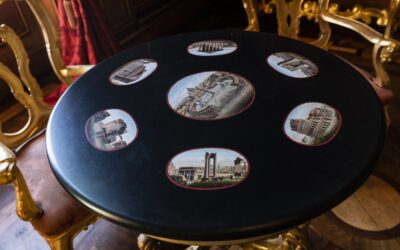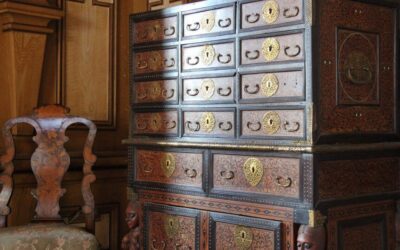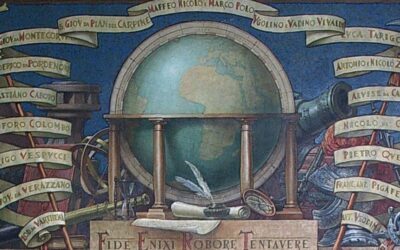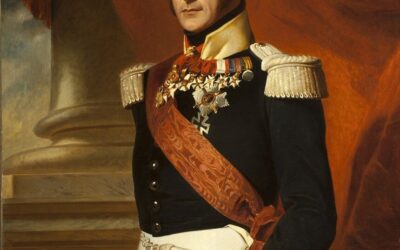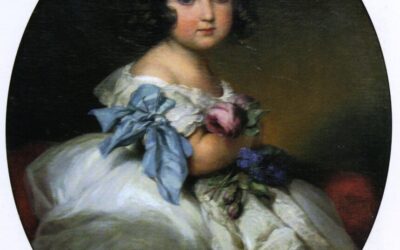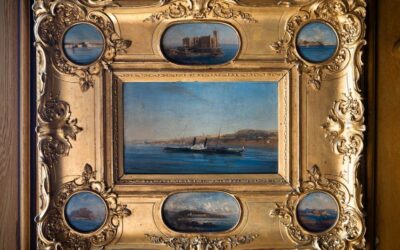An eclectic collection that brings together works and styles from around the world.
The archduke developed his love of collecting at a young age: he began collecting objects of historical importance as early as 16 for his personal collection. He demonstrated eclectic interests, bought extravagant trinkets and was attracted to exotic objects. There seems to be no method of collecting but rather a desire to accumulate, unsystematically, in order to build a princely, valuable, and heterogeneous collection. Caskets, clocks, chinoiserie, and archaeological finds can be admired in the rooms of Miramare Castle.
Pinwheels of Flowers
Table pendulum clock with shelf, painted and gilded porcelain, Meissen manufactory, 19th century. Miramare Castle rivals its surrounding park in its lively and constant attention to the botanical and floral element, which in the castle’s rooms also returns prominently...
A theatrical clock
Along the windowed wall, the dining room cherishes a veritable treasure: among the Anglo-Dutch style furniture, characteristic for its minute floral inlays and domed shape, stands an eighteenth-century clock of very fine workmanship, both in terms of the case and...
Eastern fantasies
Table pendulum clock, gilt bronze, enamelled steel, and glass, second half of the 18th century, bell chime, hour and half-hour. In the Japanese sitting room, resting on a shelf, a bizarre eighteenth-century clock draws the gazes of adults and children alike, evoking...
Rococo chimes
Wall pendulum clock, gilt bronze and enamels, late 18th century, hour and quarter chime Hanging on a wall in the room decorated with paintings by Cesare Dell'Acqua, a fine cartel clock from the late eighteenth century, characterised by a particularly robust case made...
Shell container, painted and glazed Imari-type porcelain, ca. 1858
The elegant shell recalls the type of ceramic known as Imari in its blue, red, gold and white polychrome colours. This name comes from the port of Imari in Japan, from where ships laden with this fine pottery, produced in workshops in the nearby city of Arita, had...
VENUS MEDICEA. BRONZE 1865
Location: Parterre In the parterre that stretches in front of the cafeteria built in the days of Maximilian of Habsburg, there is a statue, cast in the nineteenth century by the Stabilimento Tecnico Triestino, located on the side, depicting a female figure of...
J. KIS, ARCHDUKE LEOPOLD WILHELM I. OIL ON CANVAS, 1857
The oil painting, as indicated by the inscription on the right in capital letters, depicts Leopold Wilhelm I of Habsburg, Archduke of Austria (1614-1662), the youngest son of Emperor Ferdinand II, who was governor of the Spanish Netherlands from 1647 to 1656 and an...
DYING GAUL. BRONZE, BEFORE 1864
The sculpture, which depicts a Celtic warrior slumped to the ground, is a small scale reproduction of the famous marble model from the Roman period on display at the Capitoline Museums, derived from a Hellenistic sculpture from the third century B.C., celebrating the...
DOUBLE GOURD VASE. CARVED LACQUER, FIRST HALF OF THE 19TH CENTURY
The vase is shaped like a gourd, narrowed in the middle to create a larger sphere at the base, on which a smaller sphere is superimposed. The gourd was used in Chinese tradition as a container for liquids. The body of the vase is coated with red lacquer in relief on a...
PAIR OF KRATERS. ZINC ALLOY, 1864
Location: Parterre. In the Park of Miramare, two large, finely decorated vases face each other at the centre of the parterre, which we know from documents were purchased by Maximilian of Habsburg in Berlin in 1864. Made of a zinc metal alloy by the H. Pohl & Comp....
TABLE PENDULUM CLOCK. GILT BRONZE, CASTING AND BURIN ENGRAVING, 19TH CENTURY
Location: Oriental sitting rooms This table pendulum clock in oriental style was originally placed in the atrium of the second floor of the castle, opposite the grand staircase, together with a group of porcelain of oriental origin, as documented by photographs taken...
Screen, engraved wood and painted glass, mid-19th century
Location: Room XVIII - the Chinese Drawing Room This screen is made of five panels, with the central panel being the largest. Though it cannot be folded, the position of the lateral panels creates a convex shape. The wood structure rests upon a double-band base,...
Console, Intarsia
Location: Room IX - Bedroom This console table/desk combines components of varied provenance from different eras, as the legs and some of the decorations on the sides and front are from the mid-1800s. Made of walnut wood decorated by carved plants, flowers, and...
Antonio Baseggio, View of Sinop. Tempera on paper, 1786
Location: Storage rooms Part of a series of views of port cities, this image portrays the port of Sinop, on the Black Sea in Turkey. Originally in the collections of the Grand Duke of Tuscany Leopold II, it travelled from Florence to Vienna and eventually to Trieste...
MELEAGER. ZINC, 1862
Location: Parterre Parterre In the Park of Miramare, to the rear end of the parterre, in front of the cafeteria commissioned by Maximilian of Habsburg, a male figure modelled in a zinc casting from the Berlin factory of Moritz Geiss is placed on a stone pedestal. ....
Meleagro. Zinco, 1862
Collocazione: Parterre Nel Parco di Miramare, sul lato di fondo del parterre, davanti alla caffetteria voluta da Massimiliano d’Asburgo, è collocata su un piedistallo di pietra una figura maschile modellata in una fusione di zinco dallo stabilimento berlinese di...
APOLLINO. Bronze, 1865
Location: Parterre In the parterre facing the cafeteria conceived by Maximilian of Habsburg as a point of refreshment for the Park of Miramare, a statue, made by the Stabilimento Tecnico Triestino, depicting Apollo with adolescent features, is positioned to the side....
Josef Kiss, Maria Teresa of Austria as a Young Woman and Francis I of Lorraine in Hunting Clothes, Oil on canvas, 1855
Location: Atrium d’Onore Soon after moving to Trieste, Maximilian began commissioning copies of portraits from imperial collections, establishing a collection of his own. Likenesses of his great-great-grandparents, Maria Theresa of Austria (1717-1780) and Francis I of...
CAPUAN VENUS. ZINC, 1862
Location: parterre In the Park of Miramare, closing the view of the parterre, immediately before the Kaffeehaus, a half-naked female figure stands sideways, raising her left arm in an extremely graceful manner, as if portrayed at the moment when she is about to...
NAPOLEONE MARTINUZZI, SUCCULENT PLANTS. GLASS, FIRST HALF OF THE 1930s
Location: Apartments of the Duke of Aosta - Sitting room of the Duchess The three elegant Cacti, 1932-1935, are part of a series of small ornamental objects, belonging to the late production of the Murano sculptor and master glassmaker Napoleone Martinuzzi (1892 -...
BEDROOM. MAHOGANY WOOD AND MIRROR, C. 1850-1860.
Location: Room IX - Bedroom (bed and bedside tables) and Room X - Charlotte's dressing room (closet and sideboard) It is believed that the furniture that makes up this bedroom was given by the city of Milan to Maximilian and Charlotte on the occasion of their wedding...
Orante. Bronze, 1865
Location: Parterre On the centre axis of the parterre, in line with the coffee house that Maximilian of Habsburg had built for the Park of Miramare, stands a statue of a boy with his arms extended, reaching up towards the sky. Portrayed in the act of prayer (and thus...
Gino Parin (1826-1944), Portraits of Victor Emmanuel III, King of Italy, and Queen Elena of Montenegro. Oil on canvas, 1930-31
Location: Bedroom of the Duchess of Aosta The portraits of King Victor Emmanuel III and Queen Elena of Montenegro were painted by Gino Parin, commissioned by Prince Amedeo, Duke of Aosta, who took up residence in Miramare Castle in 1931. The artist worked for five...
Joseph Jüttner, Terrestrial Globe. Wood, paper, copper, brass, 1839
Location: Room V - Library This globe is made of papier-mâché covered in plaster and engraved copper. The meridian ring is made of brass, while the horizon ring is in wood, detailed with degrees, signs of the zodiac, names of the months and cardinal directions. The...
Copy after F.X. Winterhalter (1805-1873), Portrait of Empress Eugenia de Montijo. Oil on canvas, pre-1868.
Location: Room XV - Audience Room The portrait of Empress Eugenia, in pendant with that of Emperor Napoleon III, is a copy of an official portrait that was completed in 1853 (now lost). The Empress is portrayed in three-quarter profile while wearing a sumptuous white...
Copy after C. Marochetti (1805-1867), Queen Victoria, parian ware, 1862
Location: Room VI - Dining room This bust immortalises Queen Victoria of Great Britain and Ireland (1819-1901) with a laurel wreath on her head, in the shape of a symbolic crown, embellished by roses and oak leaves. This polished, refined portrait is in...
Chinese manufacturer, Fish tank. Painted and glazed porcelain, mid-18th century
Location: Room XV– Audience Hall This painted porcelain vase is one of two located at the sides of the door that leads from the Audience Room to the Seagull Room. Its current placement corresponds to what is documented in pictures taken in the 1870s. In China,...
Ippolito Caffi (Belluno 1809 – Vis 1866), Evening festivities in Venice in honour of Archdukes Maximilian and Charlotte, oil on canvas, 1857
Location: Room XII - The Windrose Room This canvas is testimony to Ferdinand Maximilian's two-year stay in the lagoon city (from 1857 to 1859), when he filled the role of Governor General of Lombardy-Venetia, splitting his time between Venice, Milan and Monza. The...
TABLE. BELGIAN BLACK MARBLE, GLASS PASTE, GILDED WOOD, 19TH CENTURY
Location: Room XIV - Royal Room It is believed that this coffee table was a wedding gift from Pope Pius IX on the occasion of Maximilian and Charlotte’s wedding. Although there is no documentary evidence to confirm this, it is plausible that the coffee table was in...
Cabinet. Teak, ebony, ivory, brass, 17th century
Location: Room IV - Maximilian's study (the ‘Novara Room’) This seventeenth-century cabinet, called a contador in Portuguese, was probably made in the colony of Goa in India. It is characteristic of Indo-Chinese-Portuguese production methods, a nineteenth-century term...
Umberto Noni (Trieste 1892 – Rome 1971), Still Life with Globe, oil on canvas, 1931
Location: Apartments of the Duke of Aosta - first floor By Umberto Noni, this painting was completed in 1931, at a time in which Prince Amedeo, Duke of Aosta resided at Miramare. In fact, he wanted to hang it in Maximilian's Library, set up as his own private study....
Copy after Franz Xaver Winterhalter, Leopold I of Belgium, oil on canvas, after 1840
Location: Room XV – Audience Chamber This canvas depicts Charlotte’s father, Leopold I, who was Prince of Saxe-Coburg and Gotha and King of Belgium starting in 1831. Charlotte was his youngest daughter, born after he married Princess Louise of Orléans, the daughter of...
Franz Xaver Winterhalter (1805-1873), Princess Charlotte as a child, oil on canvas, c. 1842
Location: Room VIII – Charlotte's boudoir A version of this portrait of Charlotte as a child is found in the Royal Collection of the British Royal Family. It was given to Queen Victoria by Princess Louise of Orléans, Charlotte’s mother and Queen of Belgium, as a...
Charlotte of Belgium (1840-1927), Yacht Phantasie, oil on wood, ante 1860
Location: Maximilian’s study, known as the Novara room Unquestionably the best pictorial work by Archduchess Charlotte, this painting presents a combination of several images sharing the centrality of the marine landscape. In the central panel, dominated by the blue...
Cesare Dell’Acqua (1821-1905), Arrival of Elizabeth of Austria in Miramare, oil on canvas, 1865
Location: Historic Hall of the Castle The painting depicts one of the most important social events in the life of Miramare’s court: the arrival of Empress Elisabeth of Austria in Miramare on May 18, 1861 on her return from her long stay in the island of Madeira. The...

